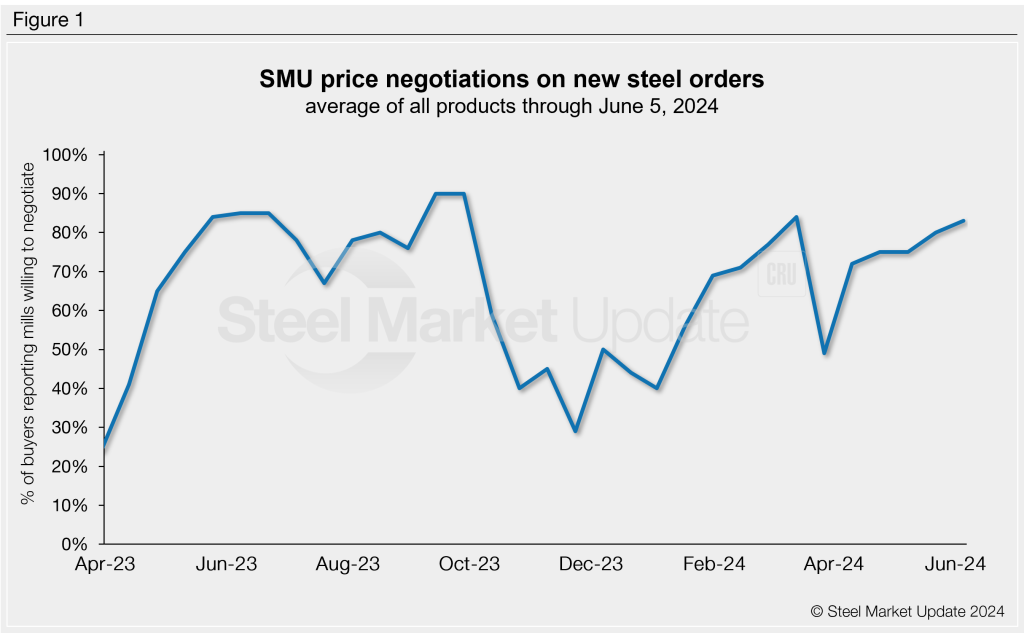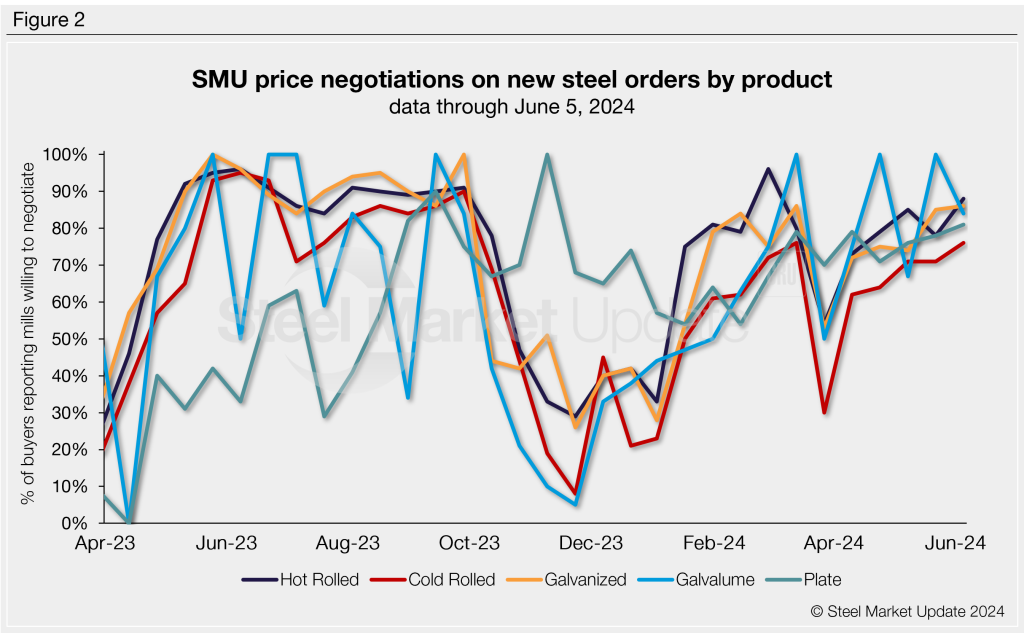SMU Data and Models

SMU survey: Most sheet, plate buyers find mills more flexible on price
Written by Ethan Bernard
June 6, 2024
Steel buyers found mills more willing to negotiate spot pricing this week on all products SMU tracks with the exception of Galvalume, according to our most recent survey data.
For buyers of HRC, 88% of respondents said mills were more willing to talk price, up 10 percentage points from two weeks earlier. At the same time, Galvalume’s rate fell 16 percentage points to 84% in the same comparison.
Every other week, SMU polls steel buyers asking if domestic mills are willing to negotiate lower spot pricing on new orders.
This week, 83% of participants surveyed by SMU reported mills were more flexible on prices for new spot orders, up three percentage points from our previous market check. With the exception of mid-March when it registered 84%, this is the highest reading so far in 2024 (Figure 1).

Figure 2 below shows negotiation rates by product. The rate for cold-rolled coil stands at 76% this week, up five percentage points, galvanized was up one percentage point to 86%, and plate was up three percentage points to 81%.

Here’s what some survey respondents had to say:
“With appreciable tons (on plate).”
“Most mills have very short lead times (on galvanized). There are a few mills with extended lead-times.”
“Depending on the mill and the size of the buy (for HRC).”
“Not with open hands, but willing (on plate).”
“Depending on tonnage (for HRC), but there is a little room to get a better deal.”
Note: SMU surveys active steel buyers every two weeks to gauge their steel suppliers’ willingness to negotiate pricing. The results reflect current steel demand and changing spot pricing trends. SMU provides our members with a number of ways to interact with current and historical data. To see an interactive history of our steel mill negotiations data, visit our website.

Ethan Bernard
Read more from Ethan BernardLatest in SMU Data and Models

SMU’s June at a glance
A look at SMU data for the month of June.

SMU Survey: Buyers’ Sentiment rebounds from multi-year low
Both of SMU’s Steel Buyers’ Sentiment Indices edged higher this week. Current Sentiment rebounded from a near five-year low, while Future Sentiment rose to a two-month high

SMU flat-rolled market survey results now available
SMU’s latest steel buyers market survey results are now available on our website to all premium members.

SMU Survey: Sheet lead times pull back after early-June blip, plate holds
Following the uptick seen two weeks ago, lead times eased this week for all four sheet products tracked by SMU, while plate lead times held steady, according to this week’s market survey.

SMU Survey: Pricing power abruptly shifts to steel buyers
The majority of steel buyers responding to our latest market survey say domestic mills are more willing to talk price on sheet and plate products than they were earlier this month. Sheet negotiation rates rebounded across the board compared to early June, while our plate negotiation rate hit a full 100%.
